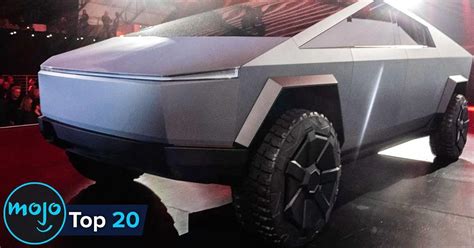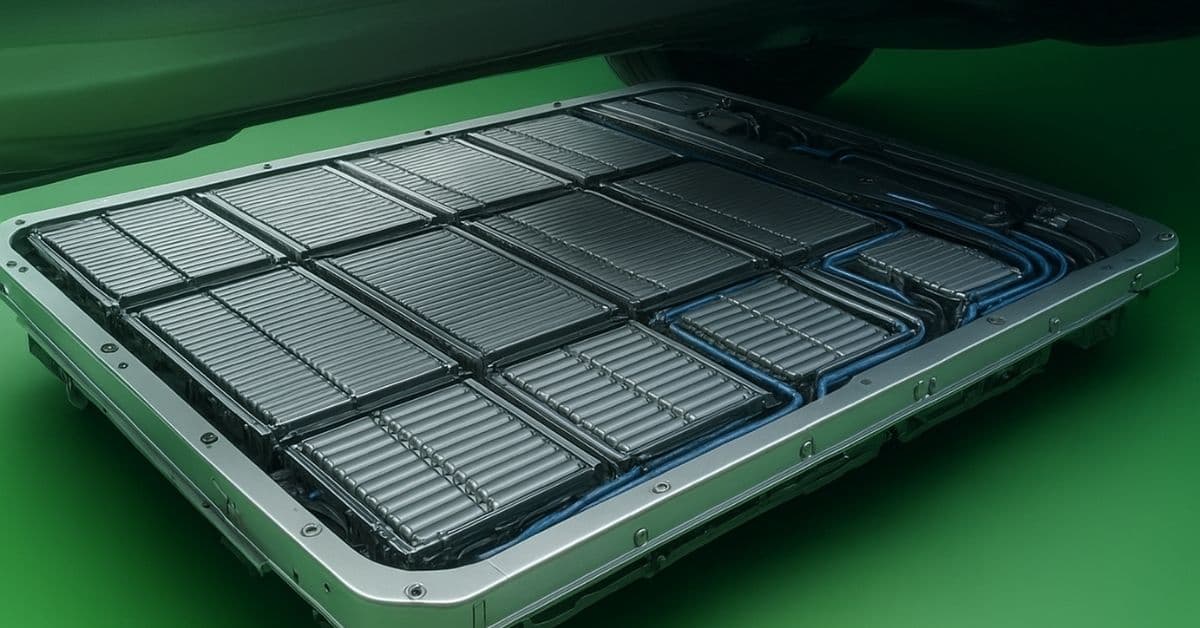When Tesla announced the Cybertruck back in 2019, it was not just another electric vehicle; it was a statement—an audacious blend of futurism, rugged utility, and technological innovation that challenged preconceived notions of what a pickup could be. As the years have rolled by, anticipation has built around its release date, with enthusiasts, industry analysts, and skeptics alike eager to see whether this beast of a machine can live up to its promises. The journey toward unveiling the Cybertruck's official release date is more than a timeline—it's a reflection of breakthroughs in manufacturing, shifts in consumer expectations, and the relentless pursuit of sustainability. This exploration uncovers the nuances behind the countdown, the hurdles faced along the way, and what the future might hold for this electric marvel, not just as a commercial product but as a symbol of transformative change in automotive history.
The Origins and Vision Behind the Cybertruck

Understanding the trajectory toward the Cybertruck’s release date begins with its audacious conceptual roots. Elon Musk unveiled this vehicle with a presentation that didn’t just highlight features but emphasized redefining what an electric pickup could emulate—toughness, durability, and futuristic aesthetics merged seamlessly. From the outset, Tesla positioned the Cybertruck as a game-changer, targeting not only the off-road enthusiast or traditional truck buyer but also the eco-conscious consumer eager for high performance with a clean edge. The design—sharply angular, stainless steel exoskeleton, massive armored glass—was deliberately provocative, signaling a break from the conventional pickup silhouette. Over time, the vision has expanded to encompass broader societal shifts—emphasizing sustainability, technological integrations such as autonomous driving capabilities, and the push for scalable manufacturing to meet worldwide demand, all intertwined with a projected release window that has experienced multiple adjustments.
Key Milestones in the Cybertruck Development Timeline

The roadmap that aligns with the future release date is riddled with significant milestones, each representing both logistical and technological hurdles Tesla has had to navigate. The initial reveal in November 2019 sent shockwaves, but it was accompanied by a promise—”production in 2021.” Soon after, the company faced unforeseen challenges. Production delays, supply chain disruptions, and the need for adapting manufacturing processes to new materials and assembly lines became focal points. The unveiling of the adapted prototype in 2021 showcased refinements—improved aerodynamics, enhanced interior tech, and better production readiness. Tesla’s groundbreaking Gigafactory in Texas, critical for Cybertruck assembly, commenced operational phases that indicated a readiness to scale up. Each milestone pushed the official release date further into the future, creating a complex mosaic of optimism and logistical realism. As of 2023, the most credible estimates suggest a market launch within the next 12 to 18 months, but the timeline remains closely guarded for strategic reasons.
Manufacturing Innovations and Challenges
The premier hurdle in meeting the anticipated release date is logistical—scaling manufacturing capacity while maintaining Tesla’s reputation for quality. The Cybertruck’s unique exoskeleton, forged from ultra-hard stainless steel, demands novel fabrication techniques—cold-rolled to extreme tolerances and assembled with robotic precision. This manufacturing innovation, while cutting-edge, introduces bottlenecks, particularly as suppliers adapt to new production standards. Moreover, Tesla’s decision to integrate giga-scale battery packs and autonomous driving hardware (Full Self-Driving tech) into a single assembly line intensifies complexity. Supply chain constraints—semiconductor shortages, steel procurement, and logistics—have historically impacted Tesla’s timelines. Yet, the company’s agile approach, including vertical integration and continual iteration, hints at a strategic focus not solely on speed but on upholding technological excellence. Consequently, the release date remains a moving target, balancing readiness with delivering a product that meets Tesla’s high standards.
| Relevant Category | Substantive Data |
|---|---|
| Projected Release Window | Q4 2024 to Q2 2025, according to industry insiders |
| Production Capacity | Initial ramp-up aiming for 250,000 units annually by 2025 |
| Battery Range | Up to 500 miles on a single charge for top-tier variants, based on testing data |
| Price Point | Expected starting at $39,900 for single-motor RWD version, scaling with options |

Anticipated Features and Market Impact
The expectations surrounding the Cybertruck are as high as ever. Beyond its distinctive aesthetic, the vehicle is anticipated to boast features that push the boundaries of electric vehicle technology. Autonomous capabilities are slated to include hardware compatible with Level 4 autonomy, enabling rapid deployment of self-driving features once regulatory approvals are obtained. The powertrain options promise a bewildering blend of performance metrics—0-60 mph in under 2.9 seconds with a tri-motor variant, and a towing capacity of up to 14,000 pounds. These specifications aim to redefine the pickup’s utility and appeal across various demographics. Industry analysts project that the Cybertruck could commandeer up to 10% of the light-duty truck market within five years of its release, owing to the synergies of its innovative design and Tesla’s expansive Supercharger network. Its entry also serves as a catalyst for traditional automakers to accelerate their electric pickup programs. It could ultimately shift the entire pickup segment toward electric dominance, affecting manufacturing paradigms, supply chain logistics, and consumer preferences globally.
Market Differentiators and Competitive Landscape
In an environment teeming with electric trucks from Ford, Rivian, and GM, Tesla’s strategic advantages lie in its charging infrastructure, brand ecosystem, and software integration. The Cybertruck’s unique exoskeleton is not only a design statement but a functional feature enhancing durability and corrosion resistance, appealing particularly to work-oriented users. The potential for over-the-air updates to continuously improve vehicle performance further cements Tesla’s ecosystem dominance. However, the competitive landscape also underscores challenges—each rival company is investing heavily in their own electric truck lineups, with design philosophies and feature sets tailored to different niche markets. As such, the Cybertruck release date becomes a critical juncture: how quickly Tesla can transition from prototype to mass-market product will determine its market leadership status. The timeliness of delivery, combined with consumer confidence in Tesla’s supply chain resilience, will be pivotal in its ultimate success.
Projected Impact on the Future of Automotive Innovation
Beyond the immediate commercial implications, the Cybertruck’s impending launch embodies larger themes—accelerated electrification, the push for autonomous mobility, and the transformation of vehicle as a service. Its release timetable influences R&D investments across the industry, compelling competitors to expedite their electric pickup offerings to remain relevant. Tesla’s dispassionate focus on vertical integration, from battery cells to self-driving software, signifies a shift toward automotive manufacturing as an integrated system rather than disparate supplier-driven processes. The iterative development approach—testing, refining, then mass-producing—might set new benchmarks for product lifecycle management. Furthermore, the Cybertruck’s success could catalyze regulatory reforms favoring electric and autonomous vehicles, shaping infrastructure policies globally. The full realization of its release date, therefore, isn’t just about a new vehicle; it’s about the evolution of transportation systems that will ultimately influence urban planning, environmental sustainability, and global industry standards.
Strategic Timing and Industry Readiness
Timing—though notoriously elusive—remains critical. Industry insiders suggest that Tesla’s alignment with global supply chain recovery, advancements in battery tech, and regulatory milestones will coalesce favorably by mid-2025. Why? Because the company’s regulatory filings, factory expansions, and supplier agreements are all calibrated for this window. Moreover, consumer interest and market demand are peaking, with early reservations exceeding 1.5 million units globally. This pent-up demand underscores the importance of a timely release. Missing projected deadlines risks losing market momentum or allowing competitors to capitalize, but rushing could compromise quality and safety—an outcome Tesla aims to avoid. The balance hinges on technological readiness, scaling efficiencies, and strategic rollout planning—each a piece of the intricate puzzle leading toward the anticipated release date of the Cybertruck.
Key Points
- Innovative Manufacturing: Titanium-strength exoskeleton demands new fabrication processes, impacting timing.
- Market Timing: Expected release window around late 2024 to early 2025, critical for competitive positioning.
- Customer Expectations: Over 1.5 million reservations highlight strong demand but also set high expectations for feature delivery.
- Technological Advancements: Deployment of autonomous driving hardware aligns with regulatory and infrastructural developments.
- Industry Transformation: The Cybertruck’s release could accelerate electrification trends across the truck sector globally.
When is the official release date for the Cybertruck?
+While Tesla has not announced a definitive release date, industry estimates project a launch between late 2024 and early 2025, contingent on manufacturing ramp-up and regulatory approvals.
What are the main technological innovations in the Cybertruck?
+The Cybertruck features a stainless steel exoskeleton, advanced battery tech with up to 500 miles range, and autonomous hardware capable of Level 4 self-driving, marking a significant leap in EV and truck integration.
How might the Cybertruck influence the automotive industry?
+Its successful launch could hasten industry-wide electrification, set new standards in manufacturing, and reshape consumer expectations for durability and smart vehicle features, prompting traditional automakers to accelerate their electric truck programs.



